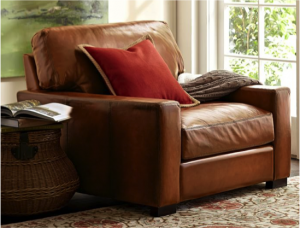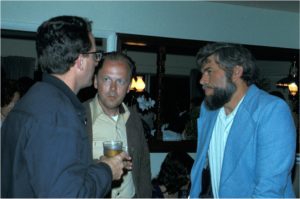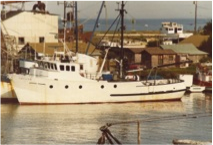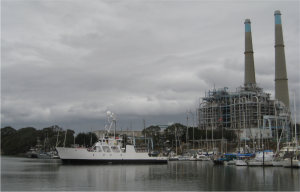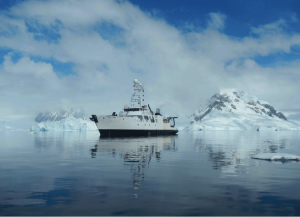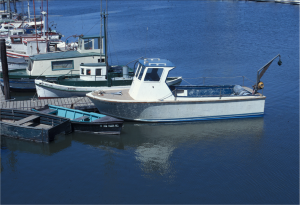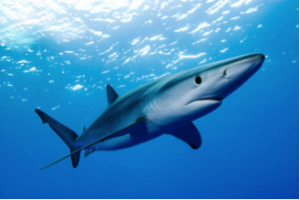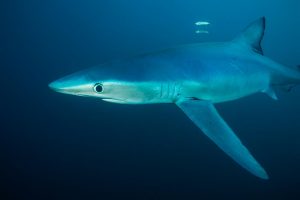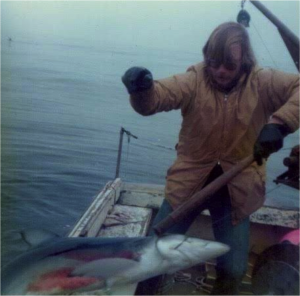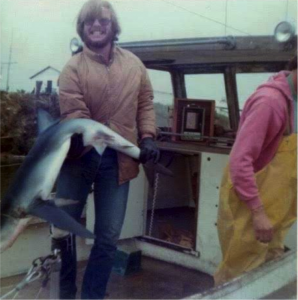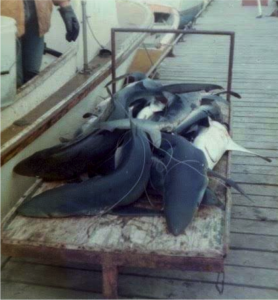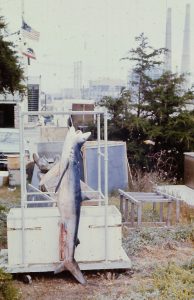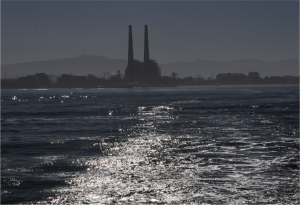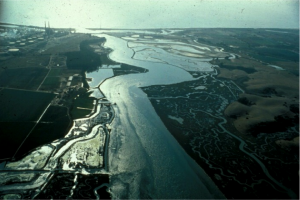By Sheila Baldridge, Joan Parker, and Jim Harvey (27 April 2016)

Every good educational or research institution has an excellent library. And it is not just the books, periodicals, maps, records, tables, chairs, and connection to information that make it excellent, more importantly it is the librarian. MLML has been fortunate to have three excellent librarians: Doris Baron, Sheila Baldridge, and Joan Parker. These three have provided a level of service that has served our faculty, researchers, and students well. In fact, probably every M.S. thesis in the MLML-MBARI library has an acknowledgement to the library staff, and most every thesis defense includes a final slide that thanks the assistance the student received from the library. Science cannot function anymore without electronic access to information. Scientists can now write manuscripts in the Antarctic, on a plane, from an office, or almost anywhere because journal articles or references are now attainable with a few pushes of a button. But that happens seamlessly because there is a librarian making the right moves behind the scenes (often with some help from IT services too). But the librarians also are the lifesavers when the system cannot find or does not have the needed document. It has become legend the ability of the MLML librarian to find these needed documents, whether hidden on our own shelves, in a distant library, or somewhere in a distant location.
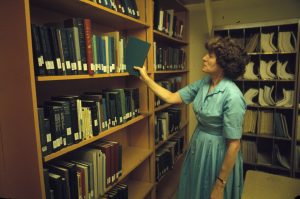
One of my favorite stories regarding the library service at MLML was the system we had when Sheila Baldridge was the MLML librarian and her husband Alan Baldridge was the librarian at Hopkins Marine Station. If someone at MLML needed a document that Hopkins had, then Sheila would call Alan, the document would be brought home that night, and the next morning it would be delivered to MLML. Best inter-library loan system in the world.
Sheila Baldridge joined the MLML staff as librarian in September 1978 and retired in September 1994. She replaced Doris Baron who took early retirement. As Doris had already left when Sheila arrived, Sheila was eternally grateful for the help of students Susan Chinburg and Steve Locy who had worked in the library with Doris and who knew the ins and out of working with San Jose State, etc.
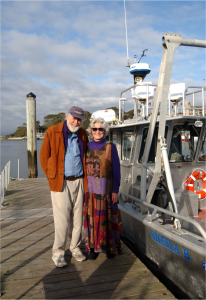
Sheila Baldridge remembers:
When I arrived the library was in its original location on the inland side of the Labs, upstairs above the shop. One of the highlights each year was having the Open House Puppet Show in the library with me praying mightily that the floor would not collapse under the weight of all the extra people.

On November 29/30 1984 as part of the remodeling of the Labs., the library moved downstairs to new space at the front of the building. Books and journals were passed hand-to-hand down the stairs along the hallway up more stairs to the new space with Sandi O’Neil, library assistant, taking them one by one from the old shelves and Sheila putting them in place on the new. What could have been a huge chore turned out to be remarkably easy. Faculty, staff, ship’s crew, shop staff all helped and we had a BBQ party in the evening as a “thank you” for everyone’s hard work. [Andrew DeVogelaere wrote a blog about this event, entitled: "Library move demonstrated community spirit"]
Part of the new space was in Palmer Beaudette’s old office. It was a large room, wood paneled with a sailfish on one of the walls and a view out over the beach to the Bay. A comfortable and interesting place to study especially in the summer when clouds of shearwaters often swirled offshore in the late afternoon.

Sheila’s memories of the Big One:
And there we happily stayed until at 5:04 on October 17th 1989 when the Loma Prieta earthquake hit. It seemed like the whole world was shaking. Windows broke, the lights went out, books came off the shelves and there was an unbelievable gap of about a foot between the floor and the wall on the Bay side of the library. I could look down and see the sand. After the shaking stopped, those of us in the library climbed out of the window in the librarian’s office as none of the doors would open. Some of us gathered at the Blue House and as the sun went down on a beautiful evening, the light, with all the dust in the air, was strangely surreal. Someone played a guitar and we all sat in silence and shock as the impact of what had happened began to sink in. It was a traumatic time for us all. The island was cordoned off and the next day we stood at the far end of the bridge and looked at our broken home not being sure if we would even be allowed in to remove equipment, research notes, library books and journals. One of the heroes of that time was Jon Raggett, a structural engineer, who after a careful survey, and some shoring up, took the responsibility of letting us go in when no one else would. [Previous blog on the earthquake was called The Day of the Quake]

And then they came, students past and present, with their families and friends, an army of people together with a fleet of U-Haul trucks and hundreds of boxes and we did indeed get everything out . The library was boxed up and each box was handed out through a window onto a truck and hauled off to Salinas down the old dirt road behind the dunes - the bridge having been declared unsafe. And there the library stayed for ten long years. First in two classrooms on the San Jose State satellite campus and then, moving for the third time, across the parking lot into two trailers.
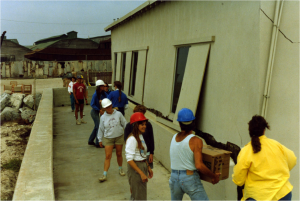
Between these two moves some of the book/journal collection was housed in an disused brick building at the Sugar Plant in Spreckles. Going there was always “interesting” – with clouds of pigeons overhead and the thought hovering in the back of my mind –“what if there is another earthquake??” Running a marine lab from trailers twenty miles inland was not by any means ideal but as always the spirit of Moss Landing shone bright and clear. We managed and somehow students studied, did research, and graduated just like they always had done.

Joan Parker joined the MLML faculty in 1994, coming here from CSU Long Beach.
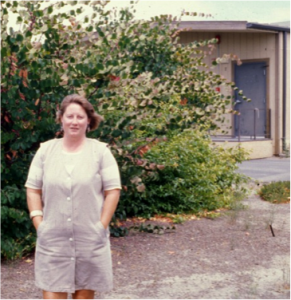
Joan Parker has listed a number of highlights for her time as the MLML librarian (1994 - 2015):
- Acquisition of the marine library from California Department of Fish and Game (now CDFW) with support from the Packard Foundation. Books and journals were boxed, put on pallets and shipped via trucking company to CSUMB where they were staged for distribution to MLML, MBARI, Hopkins, UCSC, MBA, NPS and UCSC.
- Agreement between MLML and MBARI to share library services. The MOU was signed by Gary Greene and Marcia McNutt before MLML moved back to Moss Landing.

- Moving into the new facility was obviously a highlight but also a lot of hard work. Volunteers from MBARI and MLML took books and journals off the shelves in Salinas, put them on rented book carts and wrapped in plastic for the move. Boxed material on pallets from storage in Salinas was added to the CDFG pallets. Over 400 boxes were waiting to be unpacked.
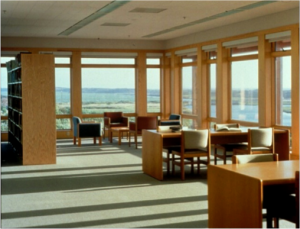
- Somewhere in the library workroom is a wooden memento put together by Aldo after he completed putting shelves in the wooden casing in the rotunda. Every single one was different so he was frustrated and amused that each had to be individually measured and cut.
- My best memory is the scores of students over the years that raised money for the library (winetasting!), valued the resource, and occasionally moved in.
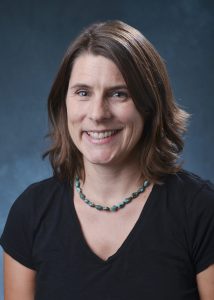
With Joan Parker's recent retirement, we have hired a new faculty member and librarian, Katie Lage. Katie comes to us from the University of Colorado Boulder where she was associate professor, map librarian, and head of the Earth Sciences & Map Library. At CU Boulder, she directed a branch library that serves students and faculty in the disciplines of geological sciences, physical and human geography, and environmental studies, and atmospheric and oceanic sciences. She received her Master of Library Science degree from San José State University. Katie’s research in the field of library and information science concentrates on the organization of and access to digital geospatial data. Katie is eager to join the Moss Landing Marine Labs and MBARI communities as our librarian and excited to continue to expand the Library's integral role in marine sciences scholarship.
A Plea by Jim: In the photos below you can see the old and new library side by side. The thing to notice is that the tables and chairs are identical.

One of my pet peeves (OK, I have a few), is that we have such a spectacular library but some of the furniture is from the old building and some even from a penitentiary. Now, I know you are thinking, penitentiary furniture might go well with being a graduate student but I think we need to change this image. So we have started a fund-raising campaign to buy new furniture for the library. Please donate what you can, and hopefully you can see your endowed chair when you come for the 50th Anniversary celebration. Thanks.
